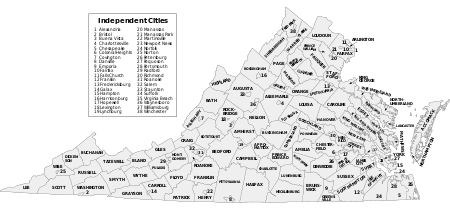| This is not a Wikipedia article: It is an individual user's work-in-progress page, and may be incomplete and/or unreliable. |
The Rosenwald schools building program began funding projects in Virginia as early as 1917. Between 1917 and 1932, Rosenwald funds helped build 382 schools and support buildings in seventy-nine Virginia counties. Most of these buildings were designed as one- or two-teacher buildings, though schools large enough to accommodate ten and eleven teachers were built in Henrico and Prince Edward counties, respectively. The rural school building program’s involvement in Virginia reached its peak between 1923 and 1924, when forty-five Rosenwald-assisted schools were constructed.
It is not known how many of these schools remain in Virginia. Many been renovated and restored to community use, such as Rappahannock County‘s Scrabble School, which reopened in May 2009 as a senior center. The National Trust for Historic Preservation placed all Rosenwald schools in the United States on its list of most endangered historic buildings in 2002.[1]
The survey found that out of the 382 Rosenwald Schools and auxiliary buildings built in Virginia, 126 are still standing and 256 have been demolished. Out of the 382 schools and auxiliary buildings, 366 were school buildings, four were teacher cottages and twelve were industrial education “shops” located at county training schools.
Other findings from the survey and supporting research include the following:
Counties with the heaviest population of Rosenwald Schools between 1917 and 1932 were Mecklenburg, Campbell, Pittsylvania, Halifax, Greensville, Charlotte and Brunswick. Modern-day uses of Rosenwald Schools include houses, churches, community centers, recreational centers, museums, offices, hunt clubs and storage. The most common plan for Rosenwald Schools in Virginia were two teacher schools with 51% of all the schools built being with that design. African American communities contributed to the cost of construction, along with the locality and sometimes the white community, to receive the Rosenwald portion of the overall funding package for each school. In many locations, Rosenwald school buildings can be found near the churches and at the center of the historic communities that funded their construction.
The Rosenwald Schools that have been listed in the Virginia Landmarks Register and the National Register of Historic Places during the course of the project are: Washington School, Rappahannock County; Campbell County Training School, Campbell County; and the St. John School, Albemarle County.
The complete list of key survey findings and an interactive map of each school surveyed can be found at www.preservationvirginia.org/rosenwald.[2]
Per Fisk University’s archives, 382 Rosenwald funded schools and auxiliary buildings were built in Virginia between 1917 and 1932 366 of these buildings were schools 4 were teacher cottages 12 were additional classroom space called “shops” at county training schools 33% stand (126) 67% are demolished (256) 51% were two teacher schools 20% were one teacher schools 13% were three teacher schools The largest school was a 10 teacher school, the Virginia Randolph School in Henrico County Rosenwald schools were located in 86 of Virginia’s 95 counties and 4 independent cities The 5,000th Rosenwald school built in the country was the Greenbrier School built in Hampton All information has been verified and placed in DHR’s Virginia Cultural Resource Information System (VCRIS). The system is DHR’s online cultural resource inventory of individual properties, sites and historic districts. [3]

- ^ McClure, Phyllis. "Rosenwald Schools". Encyclopedia Virginia - The Humanities. Library of Virginia. Retrieved 27 February 2022.
- ^ "Preservation Virginia Completes Architectural Survey of Historic African American Rosenwald Schools". Preservation Virginia. Preservation Virginia. Retrieved 27 February 2022.
- ^ "Rosenwald School Architectural Survey". Preservation Virginia. Preservation Virginia. Retrieved 27 February 2022.
